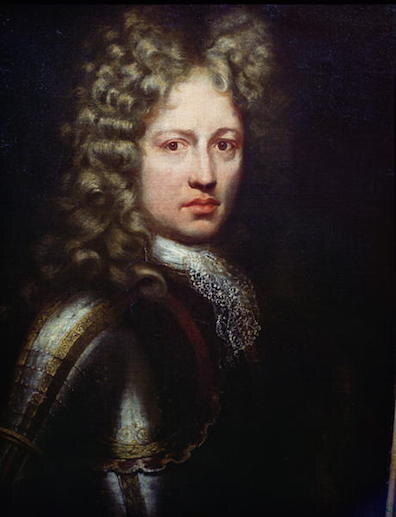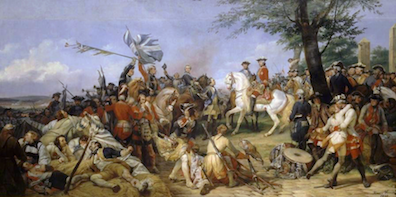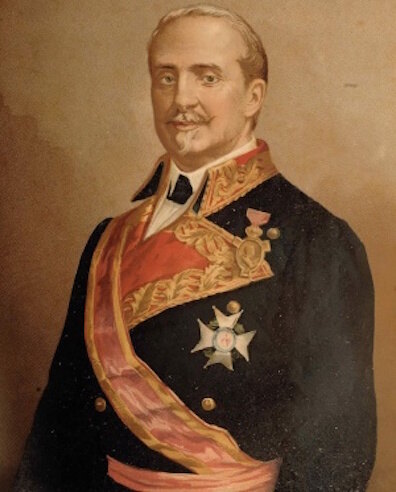Wild goose
Wild goose
In Brief
The "wild geese," Irish Catholic fighters expatriated by unsuccessful resistance to British rule, come up several times in Ulysses, beginning in Proteus. The term usually refers to soldiers who left Ireland in the 17th and 18th centuries to join foreign armies, and later chapters mention the military and political exploits of these men and their descendants, but Stephen applies the phrase to Kevin Egan, a Fenian from the 1860s who has been living quietly in Paris.
Read More
Stephen's proximity to "the Pigeonhouse" makes him think of Léo Taxil's funny story about the Virgin Mary's insemination by a pigeon, and that memory triggers a long recollection of the time he spent in Paris with Patrice Egan, the young man who told him about Taxil's book. But he is also thinking of a second kind of bird, since Patrice's father is a "wild goose": an Irish patriot who has fled his homeland for the Continent.
The term was apparently first coined to describe expatriate Irish soldiers who had supported the English Stuart monarch James II during his struggle against Protestant forces loyal to William of Orange. After James' defeat at the Battle of the Boyne in 1690, two treaties were signed at Limerick in 1691 which gave Jacobite soldiers under the command of Patrick Sarsfield the choice of returning to their homes, joining the victorious army, or emigrating to France or other Catholic European nations. Over 14,000 Irish soldiers, many of them with their families, emigrated to France where James maintained an army. Others went to Spain or Austria.
Some Irish Catholic troops had already served in Spanish armies in the 1580s and 90s, fighting against the English in the Low Countries. In 1607 the "Flight of the Earls" after their defeat in the Nine Years' War brought more Irish soldiers into service to the Spanish crown, but as Spanish power declined over the next century and French power rose, France became the more attractive destination. Sarsfield's wild geese, whose flight to Europe recalled the Flight of the Earls 85 years earlier, kept their regimental colors but joined a French army that nearly invaded England in 1692. A half century later, after facing another such Jacobite revolt in Scotland, the British reconsidered their policy of encouraging disaffected young Irish Catholics to leave their country and join foreign armies.
In Aeolus, the mention of Austrian cattle in Mr. Deasy's letter sends Myles Crawford off into a recollection of how the son of one of the Austrian "Wild geese," an O'Donnell, saved the life of the Austrian emperor in 1853. Gifford notes that "The O'Donnells in Spain and Austria were one of the most famous of the wild-goose families." In Cyclops, John Wyse Nolan bitterly proclaims that "We gave our best blood to France and Spain, the wild geese. Fontenoy, eh? And Sarsfield and O'Donnell, duke of Tetuan in Spain, and Ulysses Browne of Camus that was fieldmarshal to Maria Teresa. But what did we ever get for it?"
At the battle of "Fontenoy" in the Low Countries in 1745, which proved crucial to the stability of the French ancien régime, the Irish Brigade in the French army fought with great distinction against the British and their allies. Leopold "O'Donnell," a 19th century descendant of the Spanish O'Donnells, was the first Duke of Tetuan, the first count of Lucena, and the first Viscount of Aliaga, and he served three separate terms as Prime Minister of Spain in the 1850s and 60s. "Ulysses" Maximilian, Count von Browne, an Austrian-born son of a Jacobite exiled after the Battle of the Boyne, served with great valor as a colonel, lieutenant field marshal, and field marshal in the Austrian army in the 1730s, 40s and 50s and was made Count of the Empire by Charles VI. When John Wyse says that this general officer was "of Camus," he is mixing him up with another, nearly contemporary Irish Count de Browne, this one from Camus in County Limerick. (According to the genealogical book Browne/Brown by Lanette Brown Brightwell, they were kinsmen.) As a result of the disappointment of Irish Catholic hopes after the Battle of the Boyne, George Browne's parents sent him off to seek military success in foreign lands. After fighting with skill and courage in the Russian army he rose to the rank of field marshal in the Russian army, and like Ulysses Maximilian Browne he was favored by "Maria Teresa," the queen of Hungary and archduchess of Austria.
In Circe, the brilliant success of all these Irish noblemen serving in Spanish, Austrian, French, and Russian armies (and even governments) briefly hoists its banner aloft as "DON EMILE PATRIZIO FRANZ RUPERT POPE HENNESSY" appears "In medieval hauberk, two wild geese volant on his helm." In the language of heraldry, "volant" means "in flight."
Joyce's Kevin Egan, a stand-in for the revolutionary Joseph Casey, has emigrated to Paris after his release from London's Clerkenwell prison. Though not a member of a French army, he perhaps deserves the term "wild goose" as someone who allegedly once took up arms against the English and now lives in exile. And his son Patrice (or Patrick) is continuing the long tradition of serving in European armies. Near the end of Stephen's long recollection of the Egans, Kevin says, "Mon fils, soldier of France."


Source: Wikimedia Commons.
